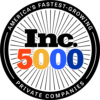Today there are more than 15 million open job listings in America, which means that in the average office, roughly one in every ten seats is empty. Meanwhile, wages are increasing at a record pace — 4.2% year over year in September of 2021. At the same time, economic pressures continue to squeeze the American workforce: over the same year-over-year period from September 2020 to September of 2021, inflation (4.4%) outpaced the average wage growth.
This means two things for American workers. One: They want higher base salaries. And two, they want better benefits with a wide range of options.
That second desire is fulfilled by Total Rewards, a relatively new, increasingly popular way for businesses to compensate employees. Total Rewards is not limited to salary and bonuses; it goes far beyond that. Total Rewards encompasses just about any reward or benefit that a company could offer its employees.
And, just like salary, Total Rewards is critical to attract and retain talent. Here’s a quick rundown of what Total Rewards are, why they matter — and how companies can implement a Total Rewards program in three simple steps.
What Is Total Rewards? Why Does It Matter?
“Total Rewards” encompasses all rewards an employer provides an employee for their work. A typical Total Rewards package includes traditional elements of base salary, bonus, incentives, and equity grants; core traditional benefits like medical, dental, and vision plans; and PTO, leave policies, remote work, scheduling, on-demand pay, education grants, family building, social action programs, and much more.
Though cash remains “king” to most employees, a flexible, well-communicated Total Rewards plan can be a differentiator in today’s competitive, dynamic job market. Studies show Millennials and Gen Z desire meaning and mission at their day jobs. Flexible Total Rewards offerings offer a way for companies to “buy into” the future of their own employees, and demonstrate what they stand for via action.
According to Glassdoor’s 2015 Employment Confidence Survey, benefits and perks are a major factor in considering whether to accept a job offer for 60% of workers. The survey also found that 80% of employees would choose additional benefits over a pay raise.
Though Millennials and Gen Z rank salary as most influential when making job decisions, 60% of Gen Z workers say they would accept a 10% lower starting salary in return for a better benefits package, while 65% of Millennials would take a job that paid 10% less in exchange for better benefits. 62% of Millennials said the benefits offered by a potential employer are very or extremely influential in their decision to accept a job offer, and 44% have turned down a job because it didn’t offer the benefits they wanted.
These numbers are borne out anecdotally. “I personally feel that benefits related to work/life balance and well-being are more attractive for Whole Foods employees,” said Andres Traslavina, Head of Executive Search at Whole Foods. “That’s one of the reasons I returned to work here. We’re not a company that pays the most compared to our peers, but oftentimes, employees will take a pay cut in exchange for quality of life.”
A Quick Note on Cash: When asked why they work, the most common reply from people is “money.” And this doesn’t only apply to older generations of workers. In fact, a survey by the WorkForce institute found that 54% of Gen Zers worldwide — including 62% in the UK and 59% in the US — said pay was the most important consideration when applying for their first full-time jobs. Money became increasingly important as Gen Zers got older: 57% of 22 to 25 year-olds agreed nothing outweighs pay, and nearly half (49%) under 21 still responded that it was all about pay. However, this doesn’t preclude a desire for wider benefits. Salary and bonuses are just one part of a complete Total Rewards package.
How We Implement Total Rewards
Enspira is at the forefront of helping organizations understand the evolving values of a diverse, multi-generational workforce. We partner with clients to build intentional, scalable Total Rewards programs that are:
- Aligned to your culture and values
- Customized to your workforce
- Competitive, compliant and equitable
When your organization begins to create and implement its own Total Rewards program, here are 3 key steps:
Step 1: To Identify What Total Rewards Are Needed, Listen.
The point of a Total Rewards program is to give employees a wide range of benefits and reward options. Unfortunately, choosing between a sea of different options regarding salary incentives, bonuses, traditional benefits like health insurance, or any number of individualized programs like pay-on-demand, unlimited PTO, family building, and more can be confusing.
A logical place to start — and where we began — was a thorough review of current benefits. Once we understood the status quo, it was time for workforce surveys, employee resource forums, focus groups, and roundtables. The point is to help your company offer benefits that are attuned to the specific interests and goals of its employees.
You’re trying to simplify a confusing process. So keep it simple. “Gone are the days of employee surveys that took an hour with 50 questions,” said Michele Lodin, Vice President of Total Rewards at Enspira HR. “The availability of quick pulse survey platforms with outstanding analytics has made asking for and listening to employee feedback easier and more natural.
It is important to get timely feedback from employees on critical elements tied to retention and engagement, as well as internal communications, diversity and inclusion efforts, and overall leadership effectiveness. Employees can do their best work and engage with your business objectives, when they feel they have a voice, and are valued and heard.
Step 2: Be Flexible, and Align Total Rewards with Company Culture & Values.
What does a flexible Total Rewards program look like? Consider a cafeteria-style plan, which meets the specific requirements and regulations of section125 of the Internal Revenue Code. Similar to picking out a salad, entrée, dessert, and beverage in a lunchroom, cafeteria plans allow employees to select healthcare, dependent care, other benefit coverage, and provide employees the ability to convert a taxable cash benefit into a nontaxable benefit.
First, an employer determines the dollar amount or credits available; then, the employee can spend some, all, or none of those dollars or credits on a variety of benefits. Because they are deducted from wages and salaries before tax, employees can save money on their purchase. Similarly, Lifestyle Spending Accounts allow employers to deposit a set monthly amount per employee that can be used on expenses — including health and wellness spending, subsidies for commuting costs, higher education tuition, and even philanthropy.
Ideally, the options on a cafeteria plan or Lifestyle Spending Account should address the needs employees shared in Step 1 of the process. This is important. Listening to employees doesn’t just help a diverse workforce get what it wants; it gives companies the opportunity to address bias and inequity in their company. Flexible benefits are often inclusive benefits. Rather than just offering maternity leave, many companies are branching out to include fertility benefits, family building benefits, and professional development benefits — giving all employees, regardless of their sex, sexual orientation, or life experience the chance to enjoy a Total Benefit. It’s a way for your company to walk the walk. As Millennials and Gen Zers enter the workforce in higher numbers in coming years, that will allow companies to provide both benefits and mission for their most sought-after talent.
Step 3: Communicate.
It’s not always smooth sailing. For employers, navigating federal laws and regulations surrounding benefits can provide a significant challenge, requiring time, effort, and funds. Communicating a complex system of flexible Total Rewards can also be challenging.
Many companies are using dashboards for easier communication of Total Rewards programs. The NBA, for instance, uses a dashboard to simply and effectively display the value of each employee’s total rewards package, and then offers a hub with information about benefits they might not be taking advantage of.
Without such technology, Oris Stuart, Chief People and Inclusion officer at the NBA told SHRM, “some may not fully appreciate the entire investment the organization is making on behalf of employees.”
The trick is to remain inclusive, keep employees engaged, and provide purpose. “The a la carte method allows an employee to pick whatever they want. It is the ultimate choice,” Stuart added. “But people won’t always make the right decisions. Sometimes you get the opposite results of what you’re striving for. But it all must be aimed at reinforcing who you are as a company.
In today’s dynamic workforce, it is important for companies to understand what motivates their employees. With new generations making up the DNA of the current workforce, employees are seeking to work at companies that are mission-oriented, socially responsible and that cater to a balanced lifestyle. With this in mind, companies are racing to position themselves as employers of choice by providing innovative and meaningful value propositions to attract and retain talent. By investing in a comprehensive Total Rewards program that goes beyond base salary and sick time, companies can increase employee engagement and satisfaction, leading to a more productive workforce where employees feel valued.
For more information, check out our Total Rewards white paper and contact Enspira to ask about our Total Rewards offerings.








